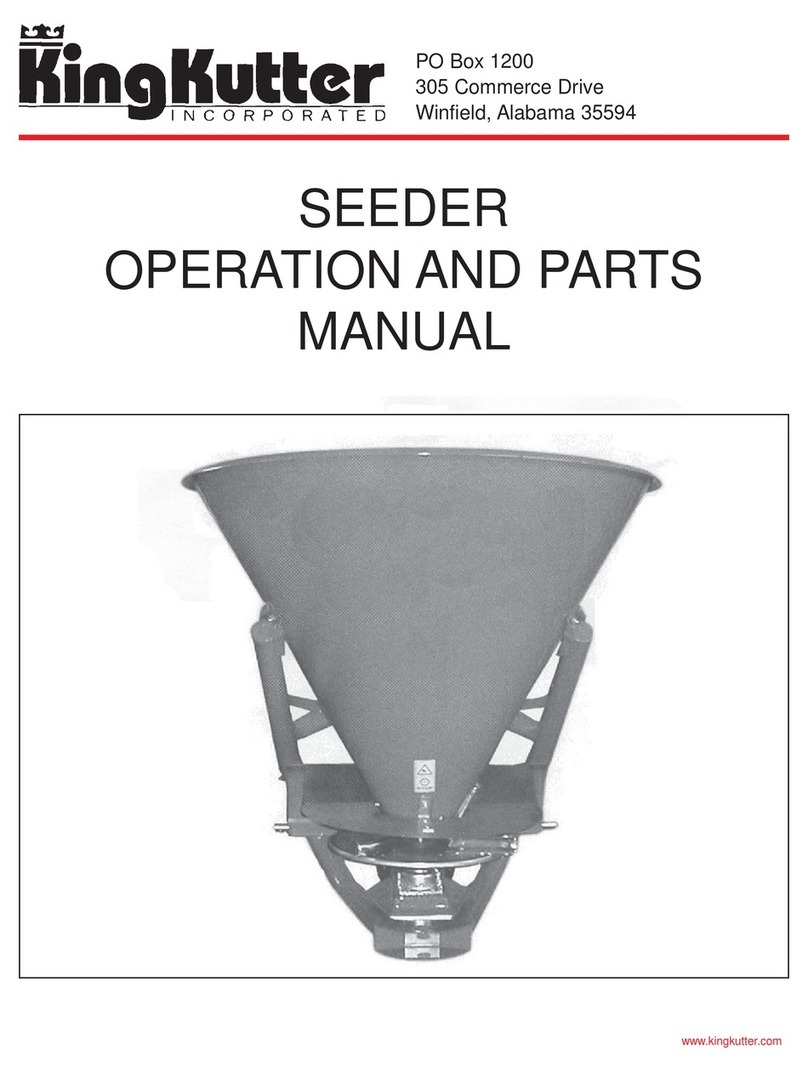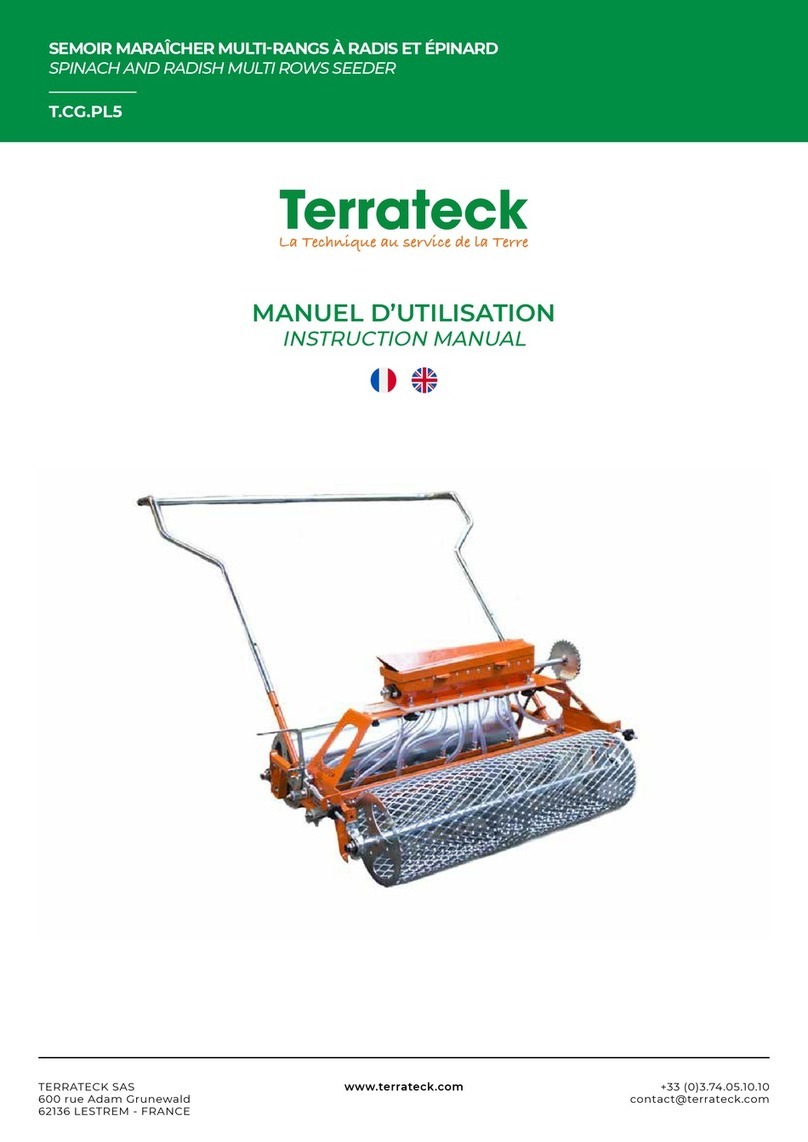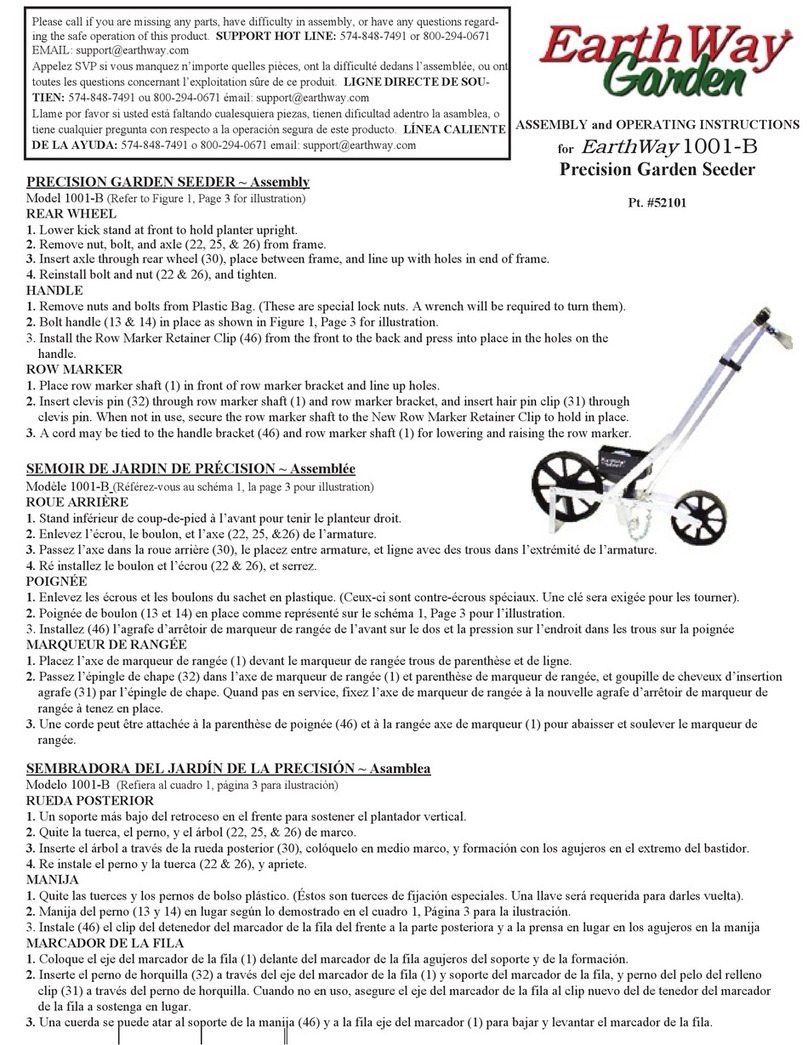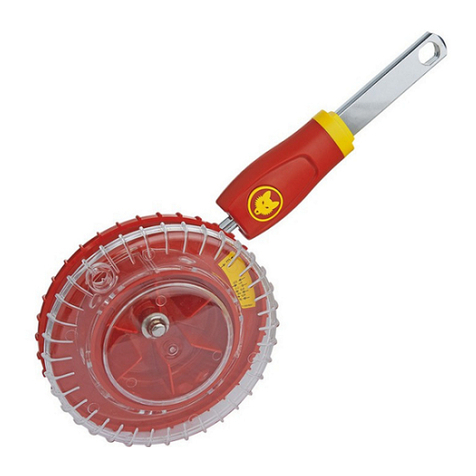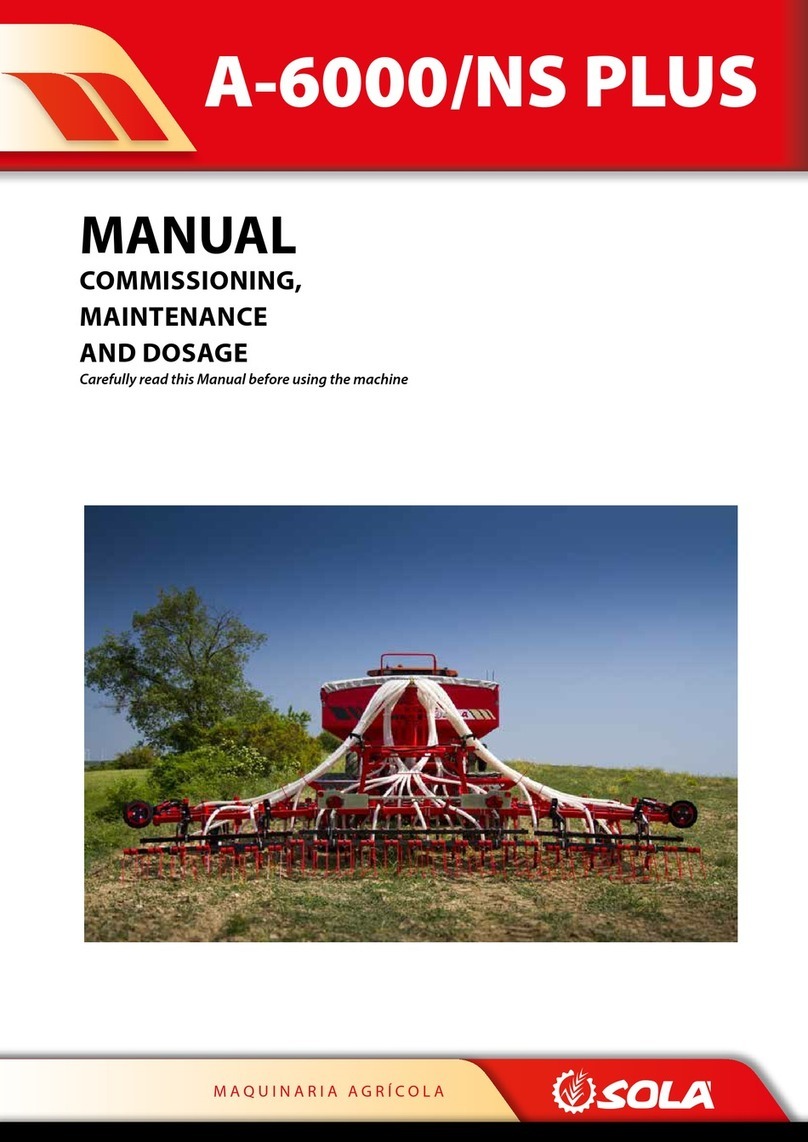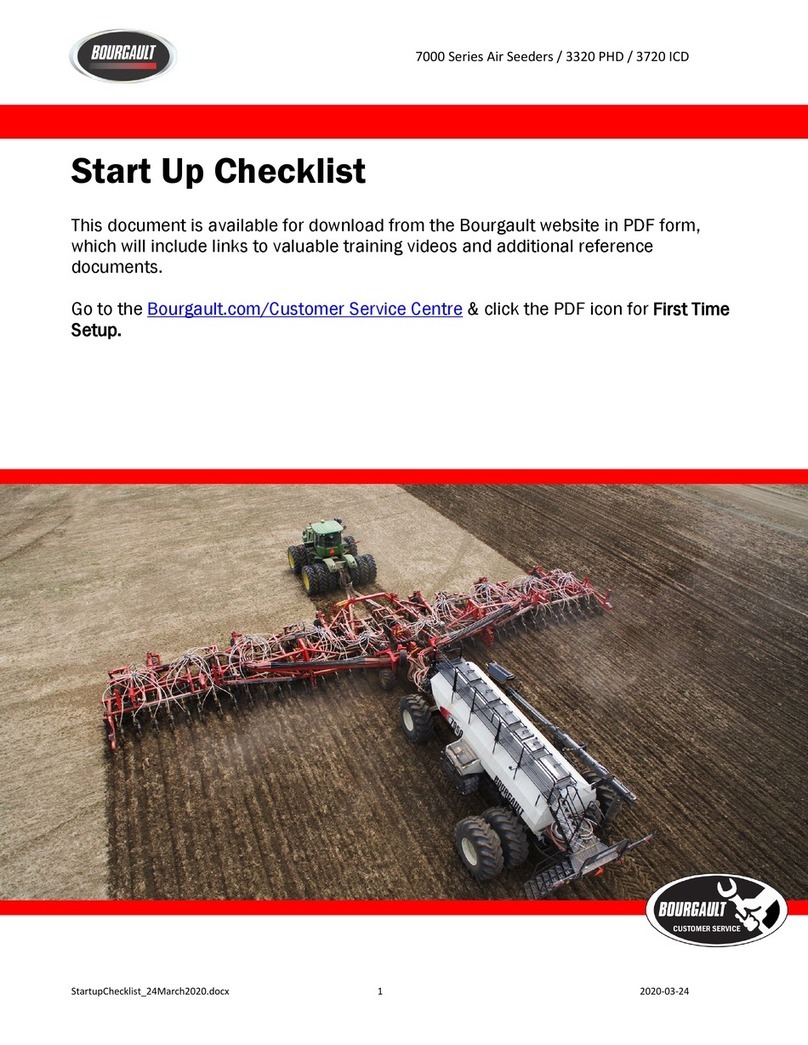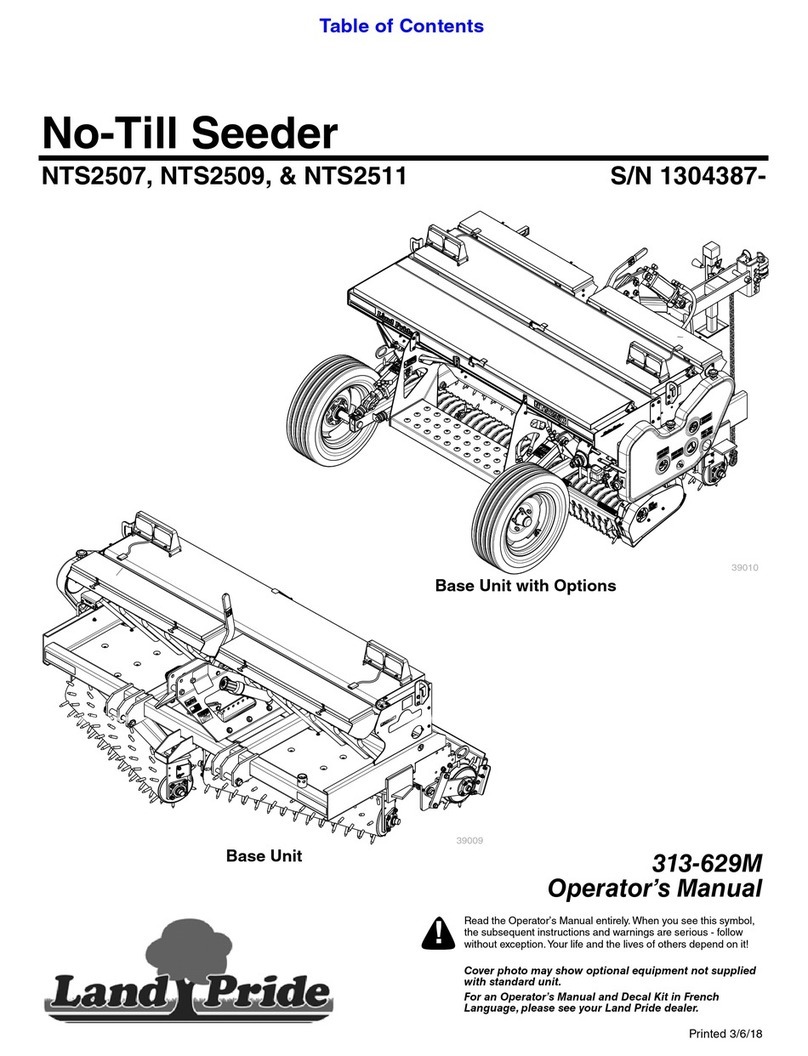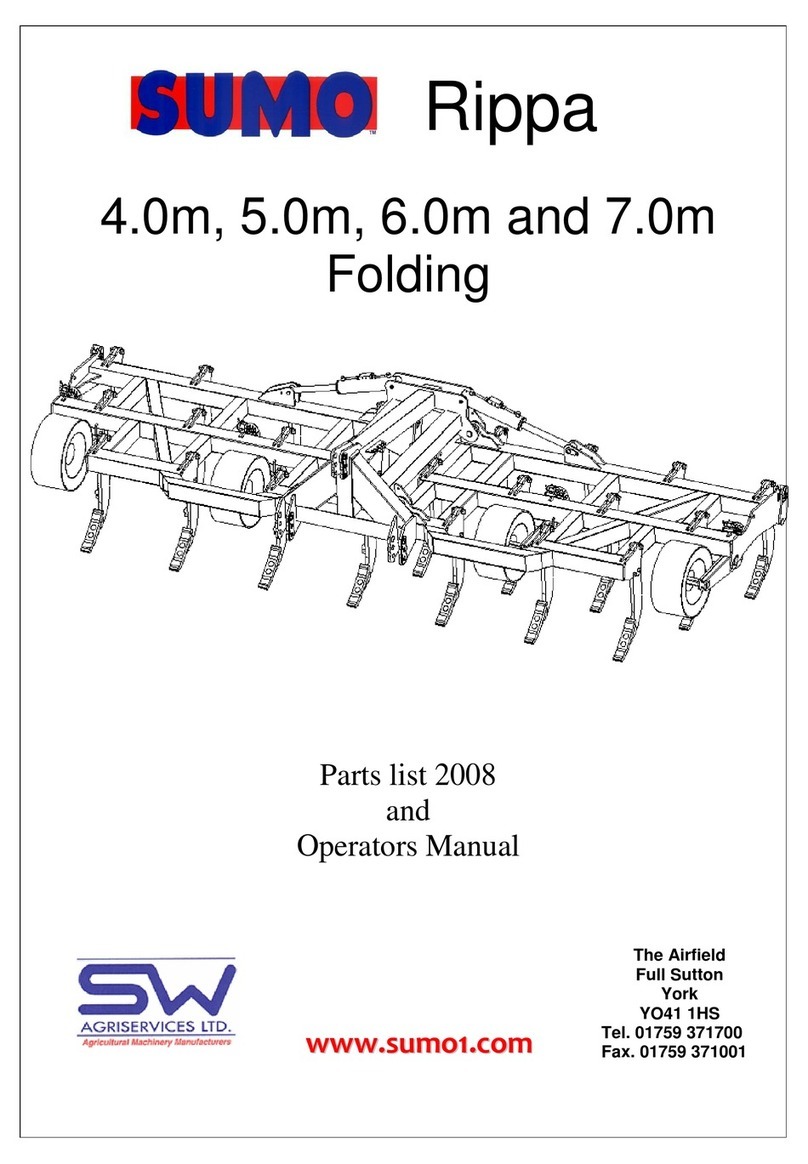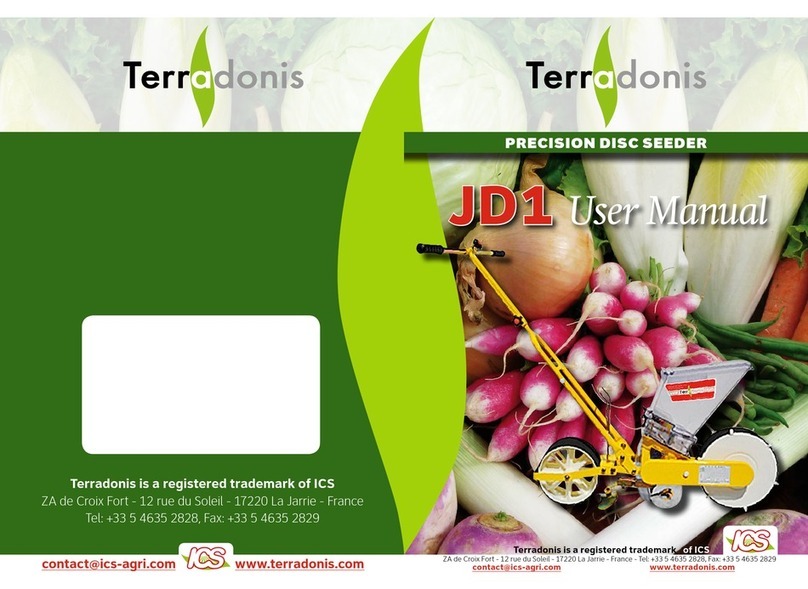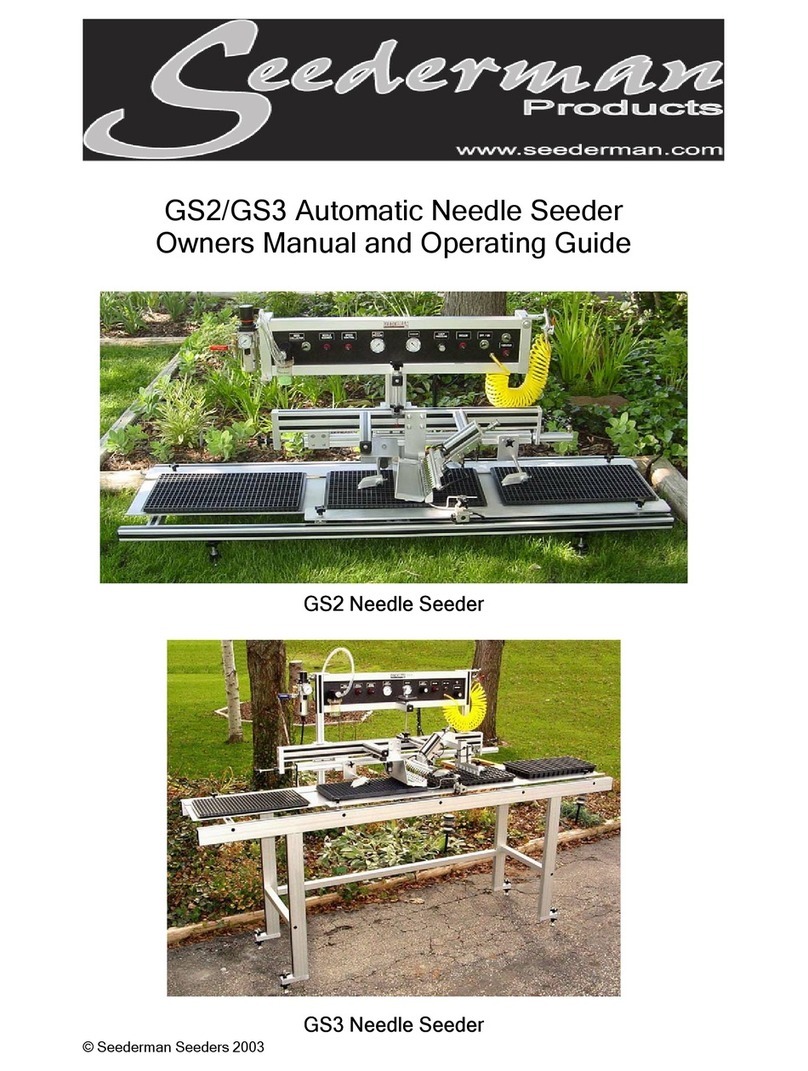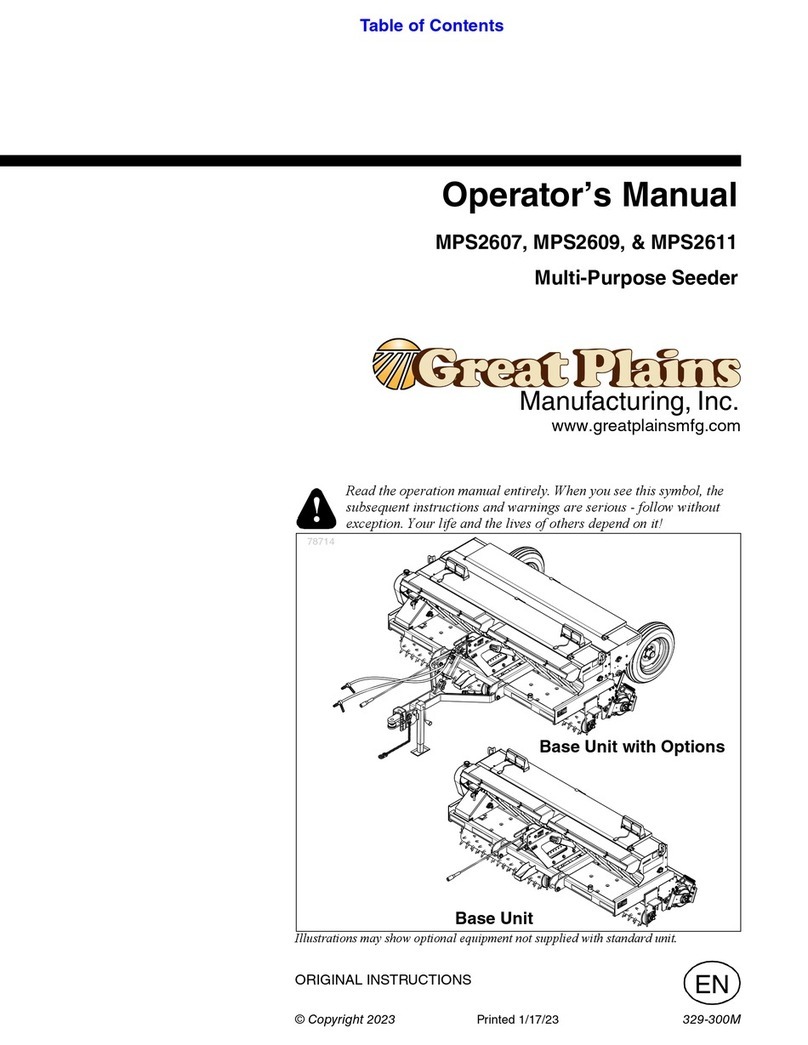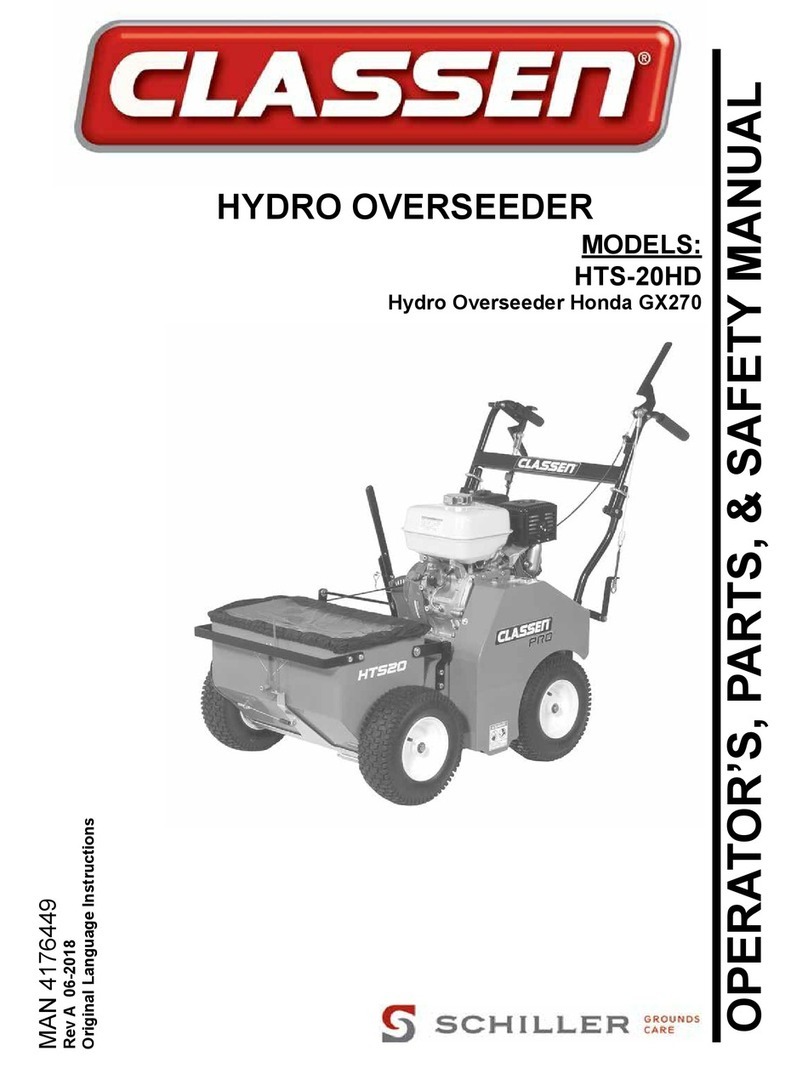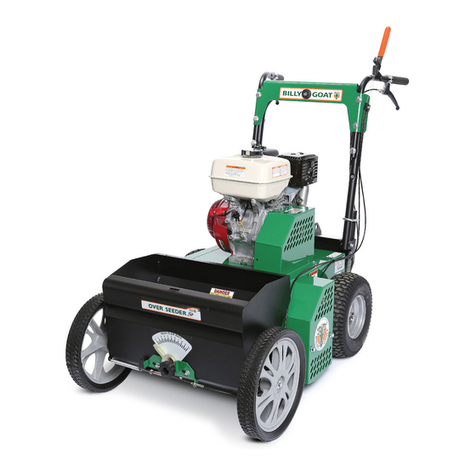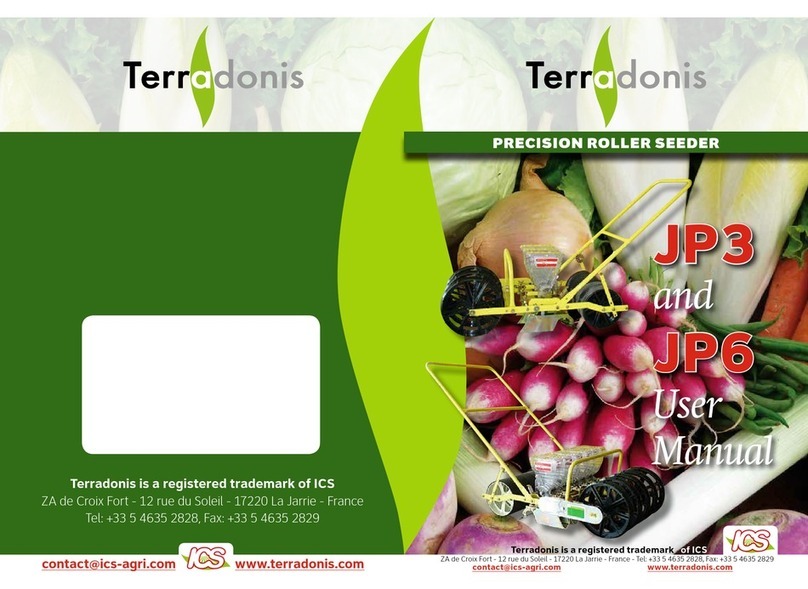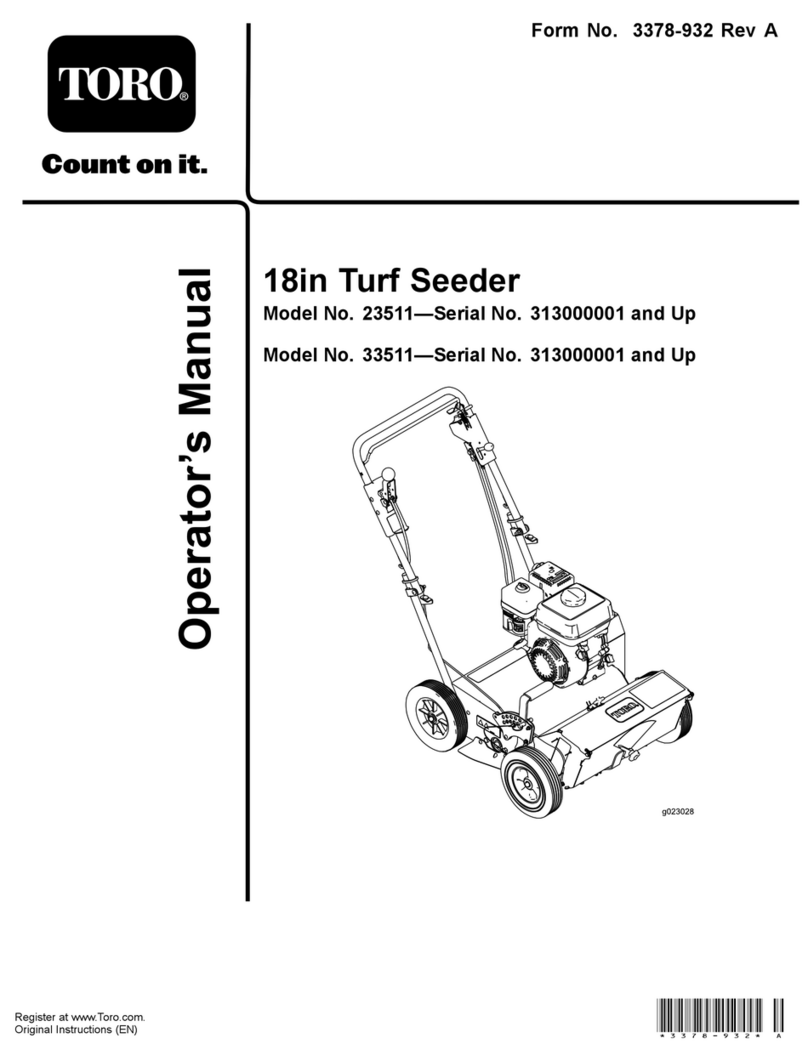
Precautions/ Road transport
Set the implement to transportation position and
check that it is roadworthy.
DONOT allow anyoneto stand orride on the
implement,or remain within its turning circle or
operating area.
Observethe relevant speed limits and traffic
regulationswhentransportingtheimplementby
road.
Takecare when negotiating curves, as towed
implements tend to swing out.
Accountfor centre of gravity on inclines and in
curves.
Observeyour local roadtrafficregulations(Highway
Code).These regulations normally hold the user
responsibleforthe secure hitching and safe
operation on public roads of the tractor and the
implements being towed.
Implements must not impair the safe steering of
tractionengines. The permissible axle loads, the
permissibletotal weight or the wheel bearing
capacity (depending on the speed and tyre
pressure) may not be exceeded as a result of the
mountedimplement. To ensuresafe steering, the
front axle load of the tractor must not be less than
20% of the empty weightof the vehicle.
Themaximumpermitted transportation width is 3
metres.A special permit is normally requiredfor
movingoversizedloads.
Noavoidablyoverhanging item must endanger other
trafficor road users (sect. 32 StVZO [German
highwaycode]oryour localequivalent).Overhanging
itemsthatcannotbe avoided must be covered and
fitted with warning signs.
Safetydevices include appropriatelightingandsigns
aroundallsides and the rear of the vehicleand
towed implement, e.g. size 423 x 423 mm, red/
whitestriped warning labels (DIN11030).
Lighting is required if the towed implement blocks
those already fitted to the tractor, or weather
conditionsmake it advisable:e.g. to frontand rear, if
the towed implement exceeds the width of the
tractor’s lights by more than 40 cm, or overhangs by
more than 1 metre with respect to the existing rear
lights.
A lighting system – with warning labels – can also
be obtained from RABE as an optional extra.
7
